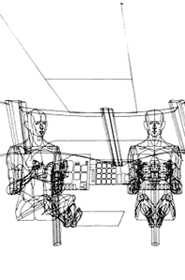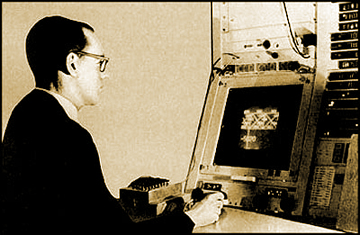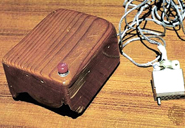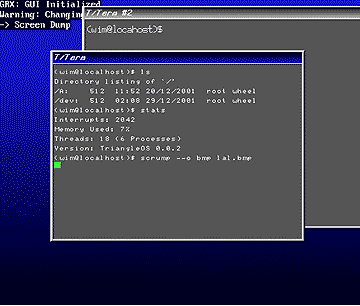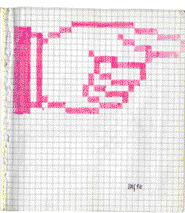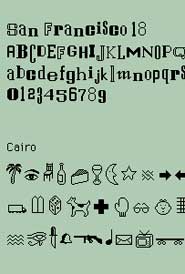| Early Computer Imaging | |||
 |
|
|
|
Alan M. Turing (1912 -1954), "A British mathematician, logician, cryptanalyst, and computer scientist who was highly influential in the development of computer science, giving a formalization of the concepts of "algorithm" and "computation" with the Turing machine, which can be considered a model of a general purpose computer. Turing is widely considered to be the father of computer science and artificial intelligence".1 Turing died in 1954 of cyanide poisoning, two years after he was convicted for homosexual activity and branded a security risk by the British government. |
Graphics without a Screen The term computer graphics was first used in 1960 by William Fetter (1928-2002), a graphic designer for Boeing Aircraft Co. Fetter was trying to "devise a new process in order to maximize the efficiency of the layout inside Boeing's airplane cockpits. His final product was a computer generated orthographic view of the human form. Fetter devised the term 'computer graphics' to describe his creation." 2 The computer images were created by plotting points on a mathematical field without the advantage of a screen.
|
The Screen image One of Fetter's contemporaries, Ivan Sutherland set things in motion in 1963 when he submitted his PhD. thesis, Sketchpad: A Man-machine Graphical Communications System. The software enabled a person, for the very first time, to interactively create an image on a computer display.
|
"Sketchpad pioneered the concepts of graphical computing, including memory structures to store objects, rubber-banding of lines, the ability to zoom in and out on the display and the ability to make perfect lines, corners, and joints. This was the first GUI (Graphical User Interface) long before the term was coined." 2 |
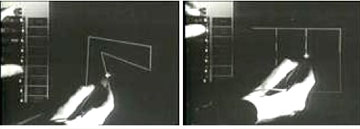 Drawing with Sketchpad
Drawing with Sketchpad |
|||
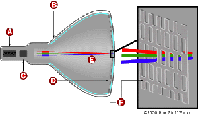 |
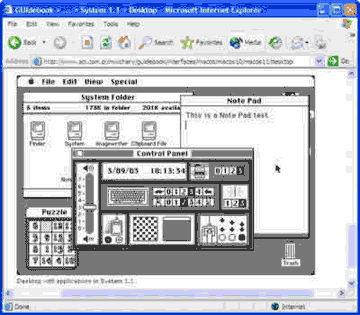 |
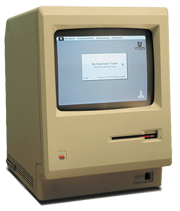 |
|
Early Screens The CRT (Cathode Ray Tube) allowed for visualization of data. At first the screen was one color and display was a very crude bit map image. The first bit maps were vertical, but later square pixels improved screen clarity. All commands were input by keyboard until the advent of the GUI, Graphic User Interface. |
GUI & WYSIWYG The Graphical User Interface (or GUI pronounced "gooey) uses pictures rather than just words to represent the input and output of a program. A GUI allows the user to control a program via the use of icons, buttons and pointers. 1981 the first consumer GUI was made available and was the inspiration behind the Macintosh computer which followed in 1983 at a cost of $9,950. ($20,000 in 2008 dollars). My first Apple in 1986 cost a little over $5,000. WYSIWYG is an acronym for What You See Is What You Get screen content appears very similar to the final product. Above, the Mac interface, 1984. 4 below, wysiwyg
|
The Mouse, 1964 Douglas Engelbart (b. 1925) He made the first prototype mouse to use with a graphical user interface (GUI), 'windows'. He described it in the patent application as an "X-Y position indicator for a display system."It was nicknamed the mouse because a tail came out the end.
Engelbart invented or contributed to several interactive, user-friendly devices: the computer mouse, windows, computer video teleconferencing, hypermedia, groupware, email, the Internet and more. 2
|
The first consumer computers. Scelbi & Mark-8 Altair & IBM 5100 Computers 1976/77Apple I, II & TRS-80 & Commodore Pet Computers |
The screen before wysiwyg and after. |
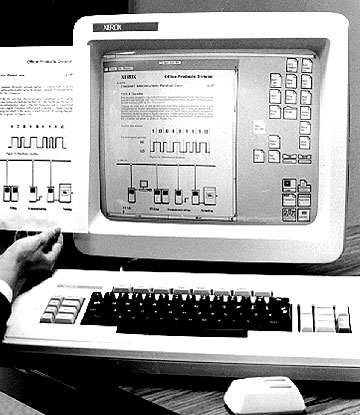 |
||
| Making the Interface Friendly : Susan Kare | |||
Original Mac Screen Icons by Susan Kare |
|
|
|
| Footnotes | |||
1 2 |
3 4 |
5 Jamie Frevele, Meet Susan Kare, The Woman behind the Apple's Icons. November 23rd, 2011. Link |
6 www.kare.com |
| Copyrights | |||
| ©Designhistory.org 2011 | For Permission Info click here | ||

